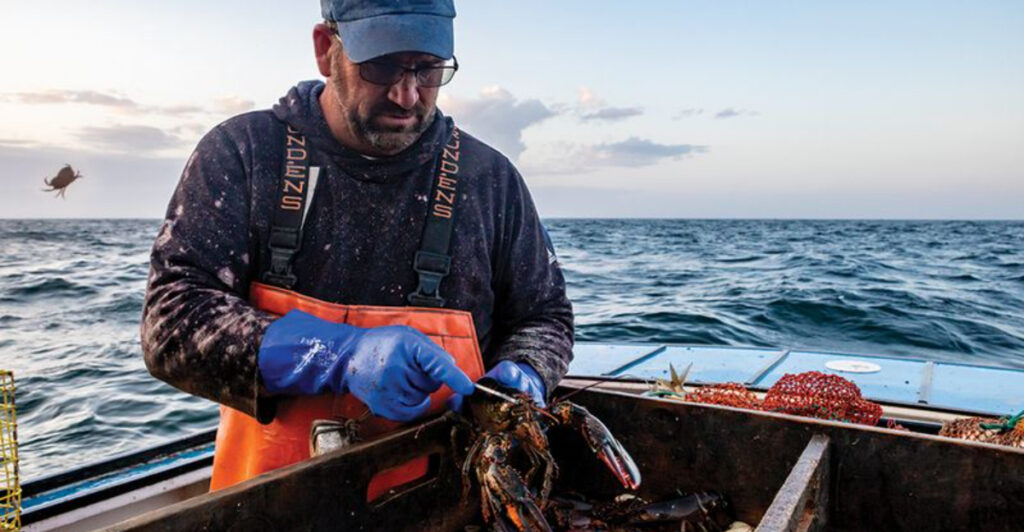Nestled on the southern tip of Deer Isle, Stonington is a small coastal town with a mighty reputation. Despite having just over 1,000 residents, this unassuming Maine community lands more lobster than any other port in the state. The rhythmic sounds of boat engines, the salty smell of the sea, and the sight of colorful buoys marking thousands of traps tell the story of a place where fishing isn’t just a job—it’s a way of life.
Record-Breaking Catches That Feed the Nation
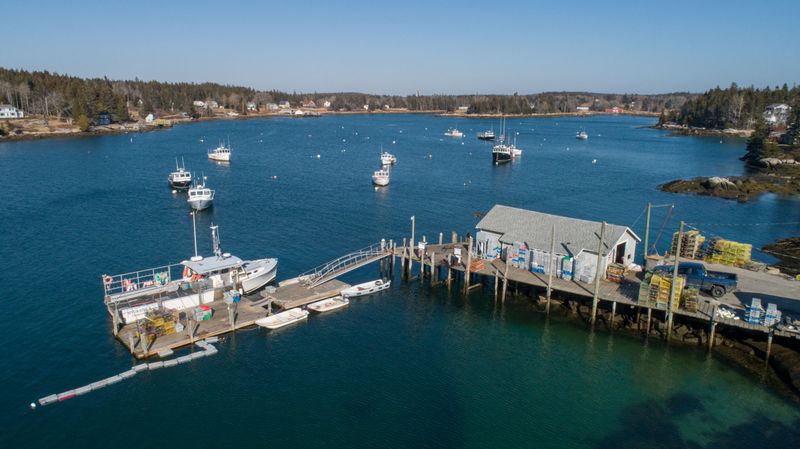
The numbers alone tell an extraordinary story. In 2023, Stonington fishermen hauled in approximately 11.4 million pounds of lobster worth nearly $48 million. That’s roughly 10,000 pounds per resident!
Every morning before dawn, a fleet of over 300 working lobster boats heads out to sea, their captains and crews facing whatever Mother Nature throws their way. Many fishermen work 14-hour days during peak season, pulling hundreds of traps by hand.
The tradition runs deep here, with fishing licenses often passed down through generations. Children grow up learning to bait traps and tie knots long before they’re old enough to work on the boats themselves.
The Cooperative That Changed Everything
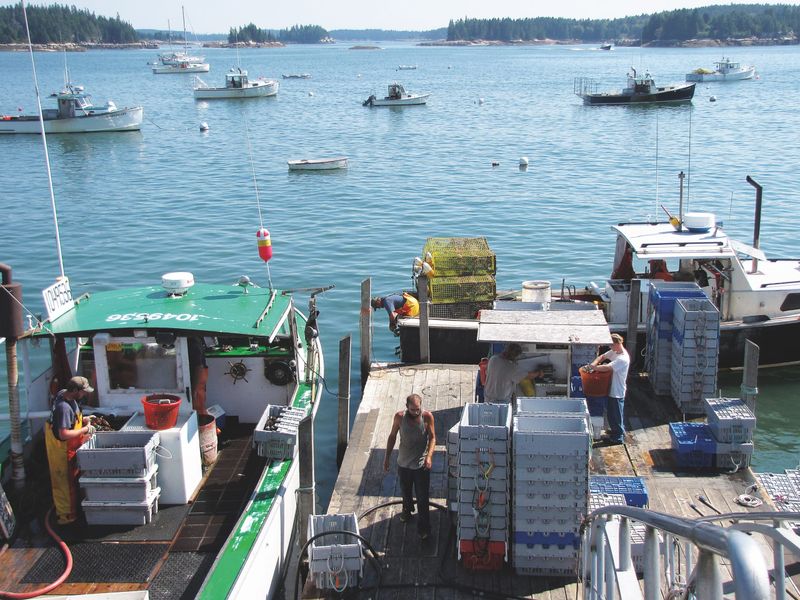
Founded in 1948 by just 15 forward-thinking fishermen, the Stonington Lobster Co-op revolutionized how local lobstermen do business. Today, with over 80 active members and 120 shareholders, it stands as the backbone of the local economy.
Rather than competing against each other, members pool resources and negotiate as a unified force. This collective approach has secured better prices, reduced operational costs, and created a safety net during lean seasons.
The co-op’s wharf processes thousands of pounds of lobster daily during peak season. Visitors can often watch the fascinating spectacle of boats unloading their catches while seagulls circle overhead, hoping for scraps.
From Trap to Table: The Journey of Stonington Lobster
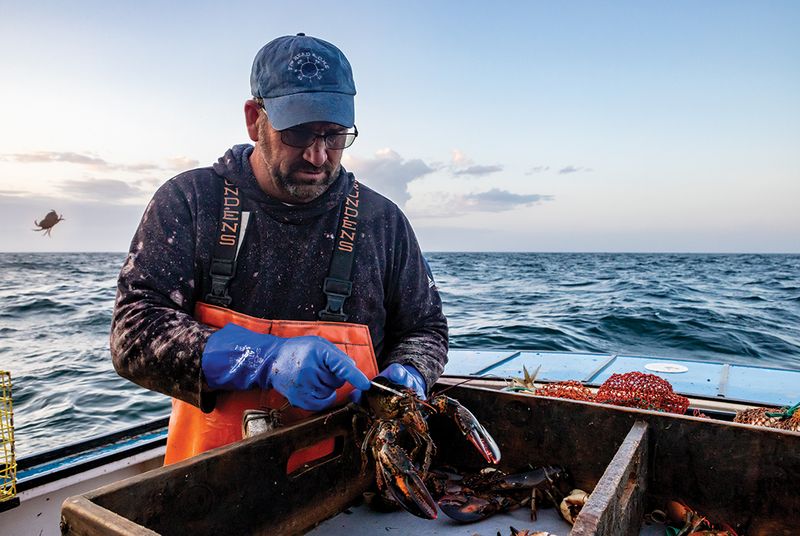
Ever wondered how that perfect lobster dinner comes to be? The journey begins when a lobsterman checks one of thousands of traps scattered across the ocean floor. Only legal-sized lobsters (between 3¼ and 5 inches on the carapace) make it into the boat’s holding tank.
Back at the dock, lobsters are sorted by size and quality. The premium catches—hard-shelled and lively—fetch the highest prices and might be shipped live to restaurants as far away as Japan or China.
The entire process from ocean to shipping container often takes less than 24 hours. This rapid turnaround ensures the exceptional freshness that has made Maine lobster famous worldwide.
A Town Shaped by the Sea
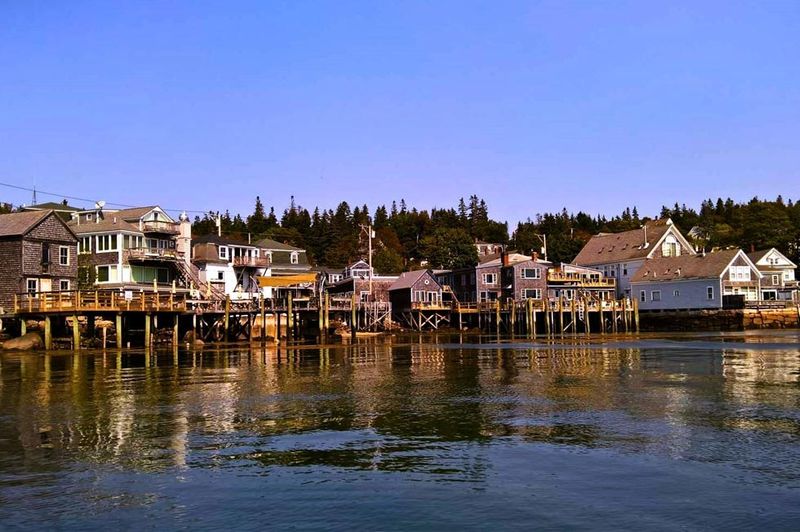
Granite and fishing built Stonington. In the 1890s, granite quarries drew immigrant stonecutters from across Europe, while the rich fishing grounds attracted maritime families. These dual industries shaped both the physical landscape and cultural identity of the town.
Walking through Stonington today reveals this heritage at every turn. Historic captain’s houses with widow’s walks overlook the harbor, while weathered fish houses line the working waterfront. The town’s architecture tells the story of boom times and lean years, all tied to the rhythms of the sea.
Unlike many coastal communities that have transformed into tourist havens, Stonington maintains its authentic working character. The smell of bait barrels and the sound of diesel engines are as much a part of the atmosphere as the picturesque views.
Facing Down Nature’s Fury
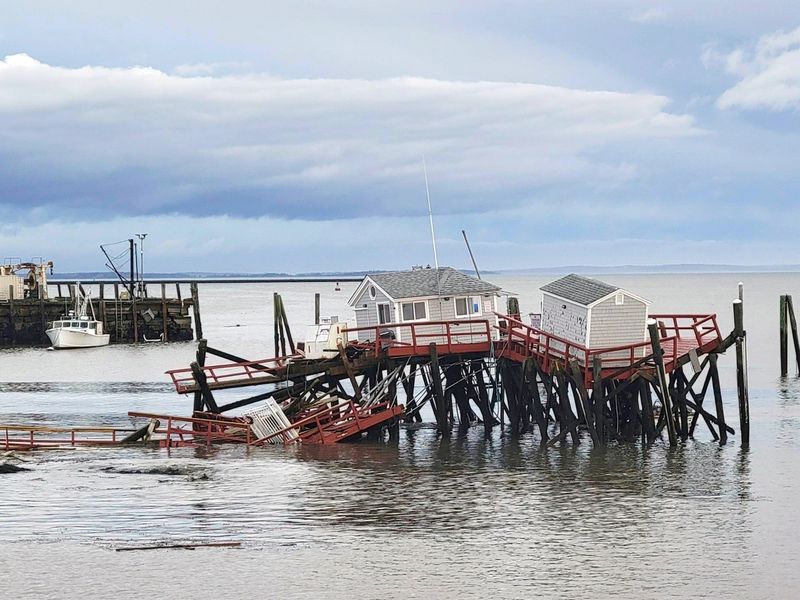
January 2024 brought devastating storms that damaged critical wharves and threatened Stonington’s fishing infrastructure. Massive waves crashed over breakwaters, and historic high tides flooded waterfront businesses. For a community whose livelihood depends on access to the sea, such events pose existential threats.
The resilience of Stonington’s people shone through in the aftermath. Neighbors helped neighbors rebuild, the co-op mobilized emergency funds, and fishermen worked together to salvage equipment and repair damage.
Climate change presents ongoing challenges, with warming waters pushing lobster populations northward and increasingly severe storms threatening coastal infrastructure. The community is responding with proactive measures, including installing sea-level rise monitoring equipment and reinforcing vulnerable waterfront areas.
The Next Generation of Lobstermen
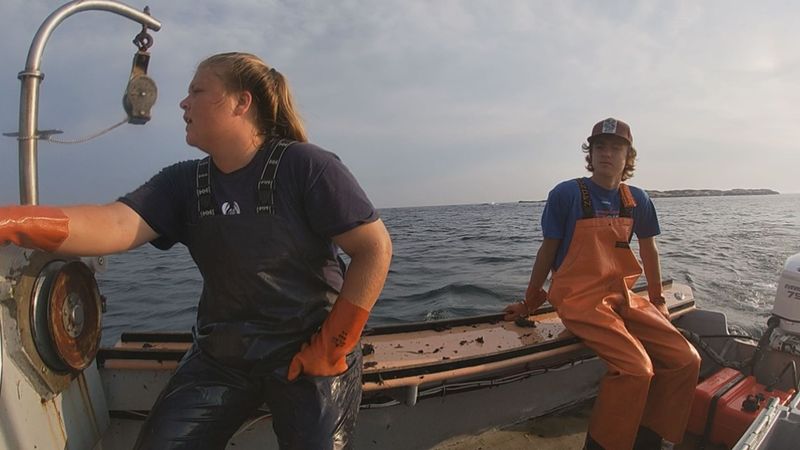
Sixteen-year-old Emma loads bait bags aboard her father’s boat before dawn. By the time her classmates are eating breakfast, she’s already hauled dozens of traps. Emma represents the future of Stonington’s fishing heritage—young people choosing to continue a demanding but rewarding way of life.
The apprenticeship system here is as old as the industry itself. Young fishermen start as sternmen, learning the ropes from experienced captains before eventually acquiring their own licenses and boats. This knowledge transfer ensures traditional skills aren’t lost.
Modern challenges like climate change and evolving regulations mean today’s young fishermen need different skills than their grandparents did. Many now combine traditional knowledge with marine science education and business training to navigate an increasingly complex industry.
Beyond Lobster: Stonington’s Diverse Marine Harvest
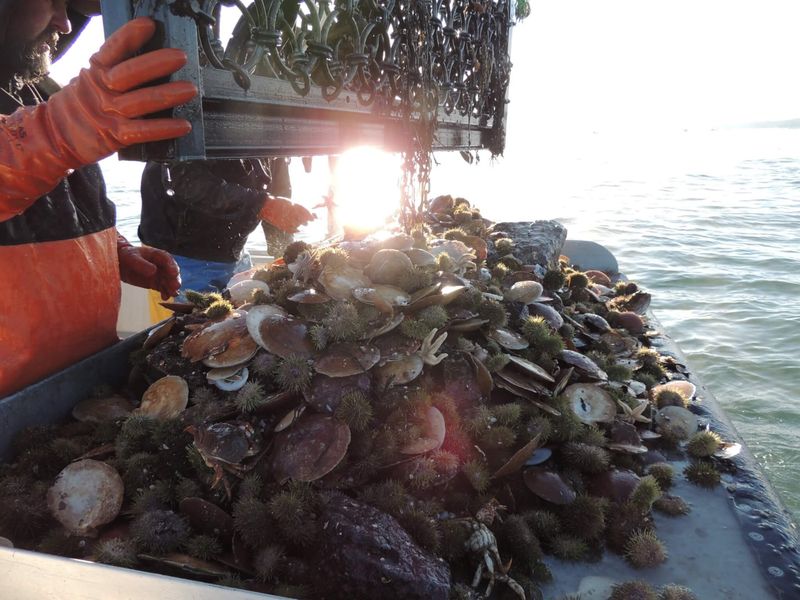
While lobster dominates headlines, Stonington’s fishermen harvest a remarkable diversity of seafood. During winter months when lobstering slows, many boats switch to scallop dragging, bringing in sweet Atlantic sea scallops that command premium prices at markets and restaurants.
Others pursue groundfish like cod and haddock, or set specialized traps for crabs and whelks. This adaptability helps fishermen weather seasonal changes and market fluctuations that might otherwise leave boats idle.
The town’s fish pier buzzes with activity year-round as different species come into season. Conservation measures like strict quotas and gear restrictions help ensure these diverse fisheries remain sustainable for future generations, maintaining Stonington’s status as a true seafood powerhouse.
Balancing Tourism and Tradition
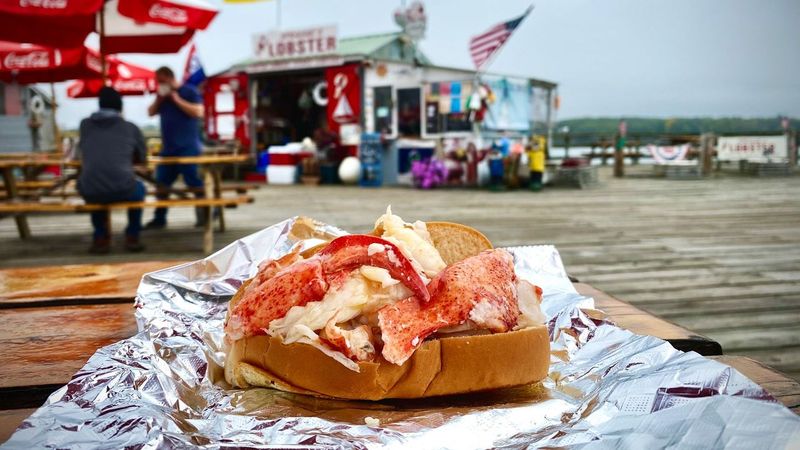
Summer brings a different kind of tide to Stonington—tourists drawn by the authentic charm of America’s busiest lobster port. Visitors triple the town’s population, crowding the handful of restaurants and small inns that cater to travelers seeking a genuine Maine experience.
This seasonal influx creates both opportunities and tensions. Tourism dollars support local businesses and provide valuable supplemental income, but also drive up housing costs and create traffic on narrow streets designed for a different era.
The community walks a careful line between welcoming visitors and preserving its working identity. Unlike more developed coastal towns, Stonington maintains strict zoning that protects working waterfront access and limits development that might interfere with fishing operations.
Housing Crisis in Paradise

The weathered captain’s house that once housed three generations of a fishing family now serves as a vacation rental, empty nine months of the year. This scene repeats throughout Stonington, where nearly half the homes are now seasonal residences.
Young fishing families face a critical housing shortage as coastal property values skyrocket beyond what working people can afford. Crew members who once rented modest apartments now commute from inland towns, adding hours to already grueling workdays.
The community is fighting back with innovative solutions. A local housing trust purchases properties to maintain as affordable year-round housing, while zoning changes encourage development of workforce apartments. These efforts aim to preserve the human infrastructure that keeps America’s busiest lobster port functioning.
Preserving the Working Waterfront
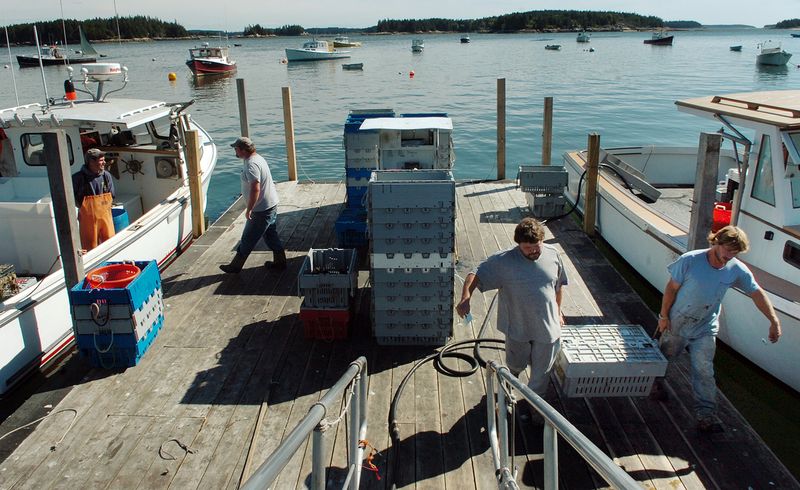
Access to the sea isn’t just convenient for Stonington’s fishermen—it’s essential. Every foot of working waterfront represents generations of maritime infrastructure development and countless livelihoods dependent on direct ocean access.
Through Maine’s innovative Working Waterfront Access Protection Program, the Stonington Lobster Co-op has secured its future by placing permanent covenants on its property. These legal protections ensure the land will forever remain dedicated to commercial fishing activities, regardless of ownership changes or development pressures.
Similar efforts throughout town have preserved loading zones, gear storage areas, and public landings. These initiatives represent a community-wide commitment to maintaining not just Stonington’s fishing economy, but its fundamental character as a place where people make their living from the sea.

